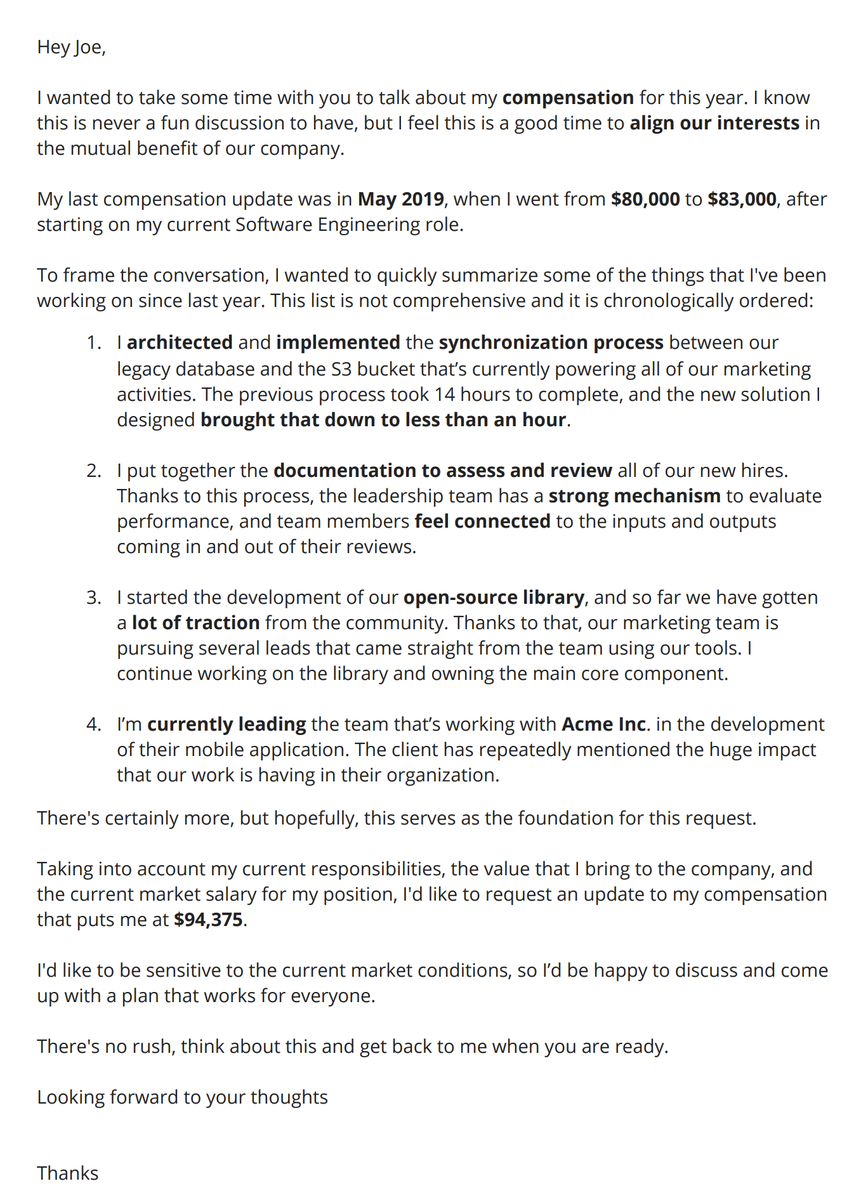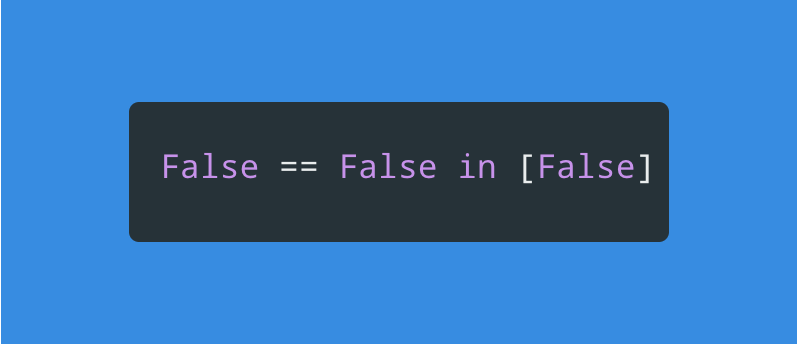
Hey!
Let’s get you a better salary right away! Who doesn’t want a raise?
I’ve done this over and over again. I’ve sat at both sides of the table when talking about compensation, so hopefully, this 🧵 will give you a few ideas on how to proceed.
Let’s do this!
👇
Let’s get you a better salary right away! Who doesn’t want a raise?
I’ve done this over and over again. I’ve sat at both sides of the table when talking about compensation, so hopefully, this 🧵 will give you a few ideas on how to proceed.
Let’s do this!
👇
* Disclaimer *
I suspect this advice is applicable across different disciplines, countries, companies, cultures, and situations. However, I can only speak for what I truly know:
- Tech Industry
- United States
- Small to Mid-Sized companies.
* End of disclaimer *
👇
I suspect this advice is applicable across different disciplines, countries, companies, cultures, and situations. However, I can only speak for what I truly know:
- Tech Industry
- United States
- Small to Mid-Sized companies.
* End of disclaimer *
👇
A couple of misconceptions:
1. The budget for your position is set: No, most of the time there’s a bracket and ton of flexibility. Also, employers are willing to break the rules for the right people.
2. Employers have all the power: Bullshit. They are nothing without you!
👇
1. The budget for your position is set: No, most of the time there’s a bracket and ton of flexibility. Also, employers are willing to break the rules for the right people.
2. Employers have all the power: Bullshit. They are nothing without you!
👇
I know that talking about compensation with your manager is hard.
But if you are afraid of confrontation and aren’t willing to toughen up, you will not get too far.
So here is the first piece of advice:
Get over it and go ask! If you don't, you will get nothing.
👇
But if you are afraid of confrontation and aren’t willing to toughen up, you will not get too far.
So here is the first piece of advice:
Get over it and go ask! If you don't, you will get nothing.
👇
The second piece of advice? Don’t be nice during a negotiation!
Polite? Yes. Professional? Yes. Nice? No.
You need to be firm, assertive, and direct. “Nice” people come away with less money than the rest (look it up.)
Don't be the Fruit-Basket person!
👇
Polite? Yes. Professional? Yes. Nice? No.
You need to be firm, assertive, and direct. “Nice” people come away with less money than the rest (look it up.)
Don't be the Fruit-Basket person!
👇
Third: Find leverage and put it right in your manager’s face.
Leverage is crucial. You want to strengthen your leverage as much as possible. You also want to understand your company’s weaknesses.
Leverage means that your Plan B is much better than your company’s.
👇
Leverage is crucial. You want to strengthen your leverage as much as possible. You also want to understand your company’s weaknesses.
Leverage means that your Plan B is much better than your company’s.
👇
To strengthen your leverage:
1. Know your market value (look it up + ask recruiters)
2. Understand what you bring to the table
3. Find the right timing
Put all of these in a piece of paper.
Or take a look at this one I created for you (github.com/svpino/raise)
👇
1. Know your market value (look it up + ask recruiters)
2. Understand what you bring to the table
3. Find the right timing
Put all of these in a piece of paper.
Or take a look at this one I created for you (github.com/svpino/raise)
👇

See that $94,375? I made that shit up, but you know what? You have a better chance of that figure to stick if you don’t go with exact, round numbers.
When you are precise, people think you did a lot of research, so you must be well prepared. Use that to your advantage!
👇
When you are precise, people think you did a lot of research, so you must be well prepared. Use that to your advantage!
👇
Understand that if you leave, your replacement cost is much more expensive than your current compensation.
Look up “employee turnover cost calculator”. That’s the barrel your manager is looking at if it doesn’t give you a rise!
Who is scared now, huh?
👇
Look up “employee turnover cost calculator”. That’s the barrel your manager is looking at if it doesn’t give you a rise!
Who is scared now, huh?
👇
If you wanna keep things simple, following the above advice should be enough to crush it.
But just in case you need a little bit more help, here are 15 quick tips:
1. Always ask for more of what you want
2. Be ready to concede on something
3. Don’t say yes at first
👇
But just in case you need a little bit more help, here are 15 quick tips:
1. Always ask for more of what you want
2. Be ready to concede on something
3. Don’t say yes at first
👇
4. Be willing to walk away (this gives you a ton of leverage)
5. Be confident!
6. Mention the past, but focus on the future
7. Don’t be pushy. But be firm
8. Emphasize what’s fair
9. Prioritize what you want
10. Don’t mention personal needs
👇
5. Be confident!
6. Mention the past, but focus on the future
7. Don’t be pushy. But be firm
8. Emphasize what’s fair
9. Prioritize what you want
10. Don’t mention personal needs
👇
11. Stall. Don’t look desperate
12. Don’t threaten with leaving
13. I’ll repeat: DO NOT THREATEN WITH LEAVING
14. No, your employer won’t fire you if you ask.
15. If you don’t feel you have enough leverage today, work on it!
👇
12. Don’t threaten with leaving
13. I’ll repeat: DO NOT THREATEN WITH LEAVING
14. No, your employer won’t fire you if you ask.
15. If you don’t feel you have enough leverage today, work on it!
👇
Finally, here is the good news:
You have all the time in the world to prepare an air-tight case to get a raise. Your employer doesn't know it's coming, so use the element of surprise!
Take your time, prepare, and go and kick ass!
You have all the time in the world to prepare an air-tight case to get a raise. Your employer doesn't know it's coming, so use the element of surprise!
Take your time, prepare, and go and kick ass!
• • •
Missing some Tweet in this thread? You can try to
force a refresh






